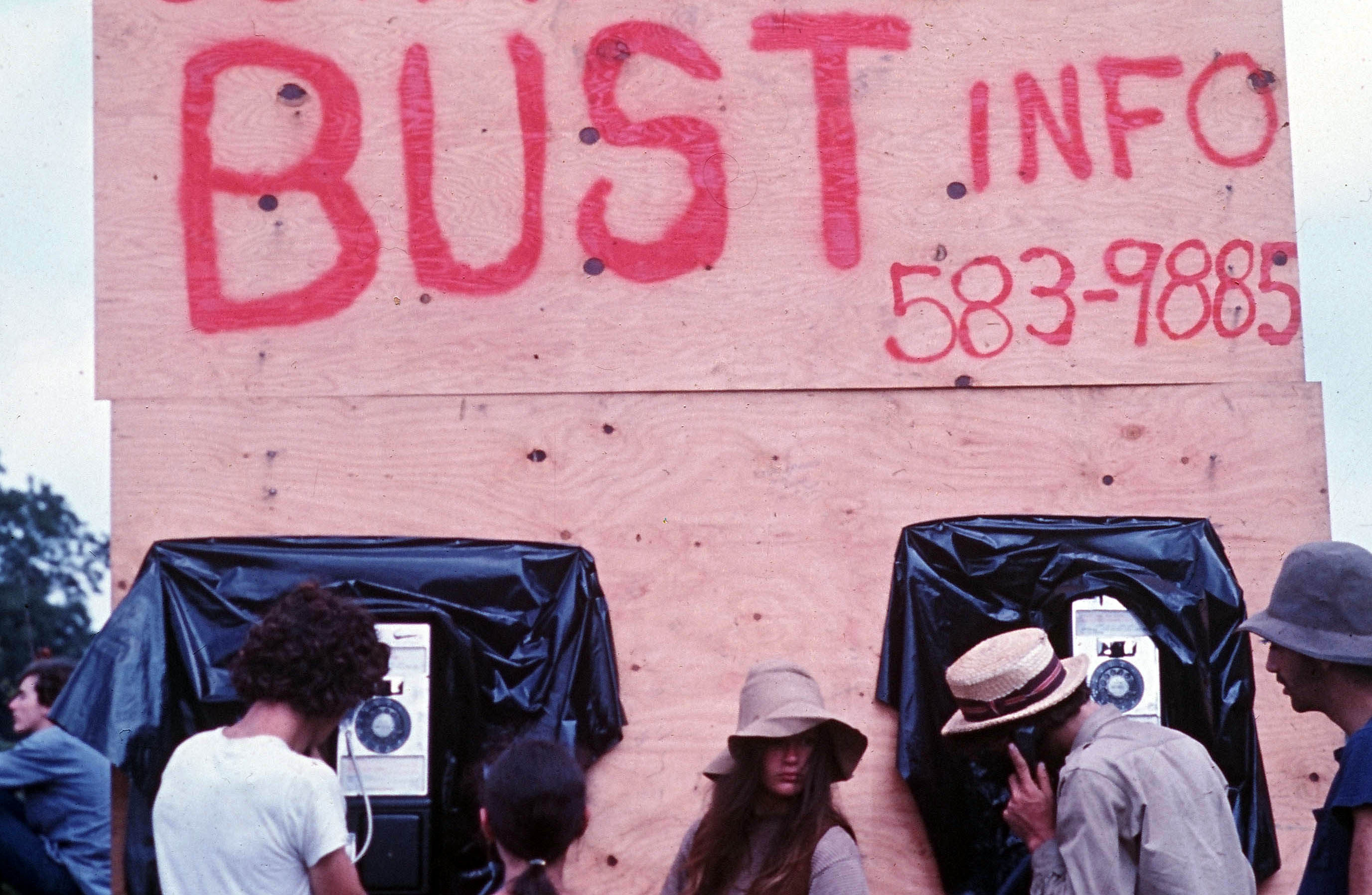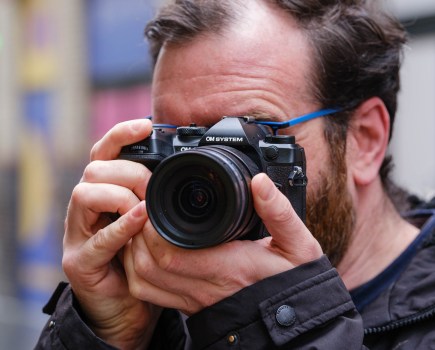For music obsessives and historians of 60s counter-culture, the really big 50th anniversary this year is not the Apollo 11 moon landing, but Woodstock. What started as a gathering for hippies, rock fans and drop-outs in August 1969 turned into the most important and influential festival in history, with over a half a million people rocking up at Max Yasgur’s dairy farm in New York State for three days of peace, love and music. While Woodstock certainly wasn’t the first big outdoor rock event in the late 60s, it became the template for pretty much everything that followed. It also encouraged another dairy farmer, Michael Eavis, to start a festival on his land near Glastonbury.

Bethel, New York: Woodstock Music Festival. Crowd watching young men sliding in the mud. August 1969 ©Tom Miner / The Image Works
The Stones and Dylan passed – the latter was annoyed about a huge festival down the road from where he lived and played the Isle of Wight instead – but a stellar line-up turned up to entertain the masses at Woodstock. This included The Who, Janis Joplin and of course, Jimi Hendrix, whose performance of the Star Spangled Banner on the drizzly Monday morning has long since passed into legend. The festival, which passed off without any serious violence or controversy, seemed to encapsulate the best of the hippy dream, even though 1969 was a very volatile and angry year in American society generally.
Woodstock also generated some great still and moving images, with the official movie coming out less than a year later. A fascinating new book by Reel Art Press celebrates this iconic event, written by the festival’s co-creator Michael Lang (below, in a photo by Henry Diltz) Lang was an idealistic and preternaturally unflappable 25 year old at the time, despite the chaos, drugs and lousy weather.

Happy campers
As well as Lang’s recollections and often hair-raising anecdotes, the book is a treasure trove of great documentary and concert photography. Some of the best music photographers of the time were closely involved in Woodstock. There was Elliott Landy, for example, who took the album shots for Dylan’s Nashville Skyline and chronicled The Band in their heyday. Another key photographer was Henry Diltz, who later became very well known for his work with The Eagles.

© Henry Diltz, Woodstock, Aug 1969.jpg
Indeed, Diltz’s images take centre stage in the book. Rather than just focussing on the bands, he pretty much shot everything he saw, from the construction of the stages, the crowds arriving after the epic traffic jams, the performers chilling out back stage, and the soggy aftermath. “It was kind of like summer camp… I almost forgot there was going to be a festival,” recounts Diltz. He spent nearly two weeks on site, and was smart enough to realise that the audience was as big a photographic story as the stars on stage, if not bigger. Remember, Woodstock was also conceived as an ‘aquarian exposition’ and a much wider cultural event.
End of an era
That said, without the music, Woodstock would not have become such a milestone event in popular culture. Diltz and Landy’s images were taken at a time when professional photographers had unparalleled levels of access to the performers. As Landy pointed out when I interviewed him in 2014, the world of rock and roll at the time was relatively small, despite the massive cultural influence it was having, and photographers and journalists were often part of a musician’s inner circle. There were certainly no armies of PRs and minders to get past, or strict ‘first three songs only’ photography restrictions, as now.

Jimi Hendrix. © Dan Garson, Woodstock, Aug 1969
Despite this access, you’d struggle to name one ‘iconic’ photograph to emerge from Woodstock. The Monterey Pop Festival in ‘67 gave us Ed Caraeff’s image of Jimi Hendrix fanning the flames of his burning guitar, while Altamont (also in 1969) is forever associated with Mick Jagger in his cape, vainly trying to restrain the Hells Angels roped in as security guards. That is not to say that there is not some great rock photography in the book, particularly of The Who and Hendrix. And at the end of the day, Woodstock was about much more than the pampered and highly paid stars on the stage. The last word goes to Michael Lang, writing from a Trump-era America that must seem as bitterly divided and troubled as it was in 1969.
“At Woodstock, we would focus our energy on peace, setting aside the onstage discussion of political issues to just groove on what might be possible. It was a chance to see if we could create the kind of world for which we’d been striving throughout the sixties. That would be our political statement – proving that peace and understanding were possible…”

Woodstock by Michael Lang is available now from Reel Art Press or all good booksellers.








